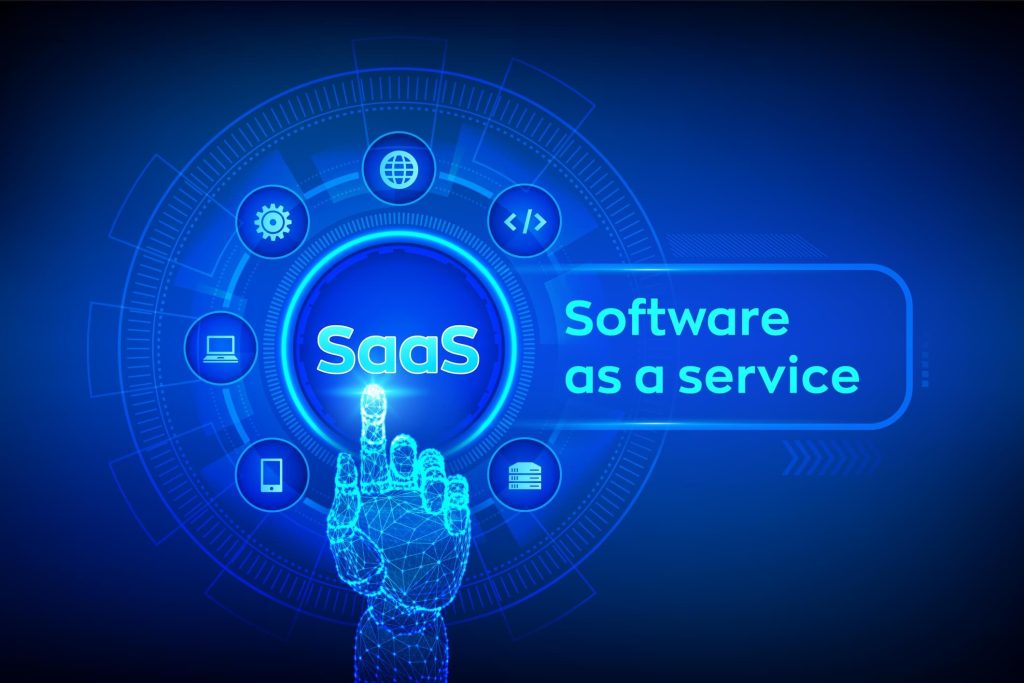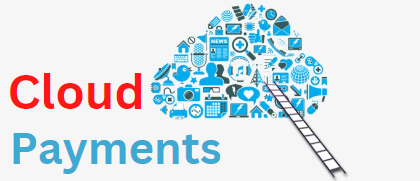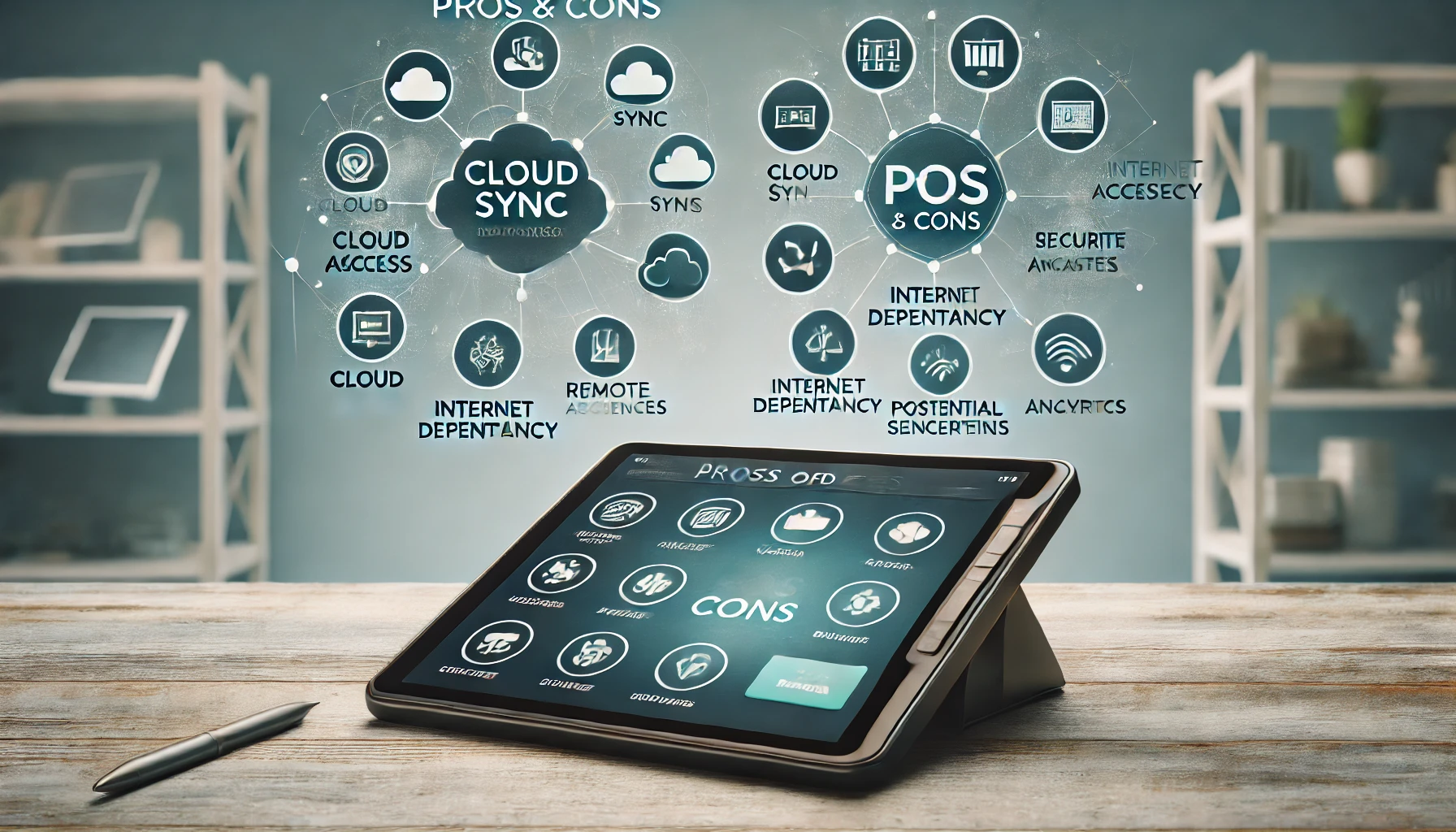Scalable Payment Solutions for SaaS Providers
Software-as-a-Service (SaaS) providers are experiencing exponential growth. With the increasing demand for cloud-based solutions, SaaS providers are faced with the challenge of managing payments at scale. This is where scalable payment solutions come into play, offering a streamlined approach to revenue management. In this article, we will explore the importance of scalable payment solutions for SaaS providers, the challenges they face in managing payments at scale, key features to look for in such solutions, different payment models, integration of payment gateways and APIs, the role of subscription management, leveraging analytics and reporting, and ensuring security and compliance.
Understanding the Importance of Scalable Payment Solutions for SaaS Providers
Scalable payment solutions are essential for SaaS providers as they enable efficient revenue management. These solutions allow SaaS providers to handle a large volume of transactions seamlessly, ensuring that payments are processed accurately and in a timely manner. By automating the payment process, SaaS providers can focus on their core business activities, such as product development and customer support, without being burdened by manual payment management tasks.
Furthermore, scalable payment solutions provide SaaS providers with the flexibility to adapt to changing business needs. As the SaaS industry continues to evolve, providers must be able to offer various pricing models, such as monthly subscriptions, annual plans, or usage-based pricing. Scalable payment solutions enable SaaS providers to easily implement and manage these different payment models, allowing them to cater to a diverse customer base and maximize revenue opportunities.
The Growth of the SaaS Industry and the Need for Efficient Payment Systems

The SaaS industry has experienced significant growth in recent years, with businesses across various sectors adopting cloud-based solutions. According to a report by Gartner, the global SaaS market is projected to reach $678.8 billion in 2024, with a growth rate of 20.4%. This rapid growth has created a need for efficient payment systems that can handle the increasing volume of transactions.
Traditional payment methods, such as manual invoicing or check payments, are no longer viable options for SaaS providers. These methods are time-consuming, prone to errors, and do not scale well with the growing customer base. Scalable payment solutions offer a more efficient and automated approach to payment processing, allowing SaaS providers to keep up with the demands of their expanding customer base.
Challenges Faced by SaaS Providers in Managing Payments at Scale
Managing payments at scale can be a daunting task for SaaS providers. Some of the key challenges they face include:
- Billing Complexity: SaaS providers often offer different pricing plans, add-ons, and usage-based charges, making billing complex. Manually managing these billing intricacies can lead to errors and delays in payment processing.
- Subscription Management: SaaS providers need to handle recurring payments for subscription-based services. This requires tracking subscription renewals, managing upgrades and downgrades, and handling cancellations. Without a robust subscription management system, SaaS providers may struggle to keep track of customer subscriptions and ensure timely payments.
- Payment Security: With the increasing number of cyber threats, ensuring payment security is crucial for SaaS providers. They need to protect sensitive customer information, such as credit card details, and comply with industry regulations, such as the Payment Card Industry Data Security Standard (PCI DSS).
- Integration Complexity: SaaS providers often need to integrate their payment systems with other business applications, such as customer relationship management (CRM) or accounting software. This integration can be complex and time-consuming, requiring technical expertise and resources.
Key Features to Look for in Scalable Payment Solutions for SaaS Providers
When selecting a scalable payment solution, SaaS providers should consider the following key features:
- Flexible Billing Options: The payment solution should support various billing models, such as one-time payments, recurring subscriptions, usage-based charges, and tiered pricing. This flexibility allows SaaS providers to cater to different customer preferences and maximize revenue opportunities.
- Automated Invoicing and Payment Processing: The solution should automate the invoicing and payment processing workflows, reducing manual errors and streamlining the payment collection process. This automation saves time and resources for SaaS providers, enabling them to focus on core business activities.
- Subscription Management: A robust subscription management system is essential for SaaS providers offering subscription-based services. The solution should handle subscription renewals, upgrades, downgrades, and cancellations seamlessly, ensuring accurate billing and timely payments.
- Integration Capabilities: The payment solution should have integration capabilities with popular business applications, such as CRM or accounting software. This integration simplifies data synchronization and eliminates the need for manual data entry, improving efficiency and accuracy.
- Analytics and Reporting: The solution should provide comprehensive analytics and reporting capabilities, allowing SaaS providers to gain insights into their revenue performance. This data-driven approach enables them to optimize pricing strategies, identify revenue trends, and make informed business decisions.
- Payment Security and Compliance: The payment solution should prioritize payment security and comply with industry regulations, such as PCI DSS. It should offer tokenization and encryption to protect sensitive customer information and ensure secure transactions.
- Scalability and Reliability: The payment solution should be able to handle a large volume of transactions without compromising performance. It should have a scalable infrastructure that can grow with the business and provide reliable uptime to minimize disruptions in payment processing.
- Developer-Friendly APIs: For SaaS providers with custom payment requirements, the solution should offer developer-friendly APIs that allow for easy customization and integration with existing systems. This flexibility empowers SaaS providers to tailor the payment solution to their specific needs.
Exploring Different Payment Models for SaaS Providers

SaaS providers have the flexibility to offer various payment models to their customers. Some of the common payment models include:
- Monthly Subscriptions: This is the most popular payment model for SaaS providers. Customers pay a fixed monthly fee to access the software or service. This model provides a predictable revenue stream for SaaS providers and allows customers to budget their expenses.
- Annual Plans: SaaS providers may offer discounted annual plans for customers who commit to a longer-term contract. This model incentivizes customers to make a longer commitment and provides upfront revenue for SaaS providers.
- Usage-Based Pricing: Some SaaS providers charge customers based on their usage of the software or service. This model is common in industries such as cloud storage or email marketing, where customers pay based on the number of users or the amount of data stored.
- Freemium Model: SaaS providers may offer a free version of their software or service with limited features, and charge for additional features or premium plans. This model allows SaaS providers to attract a large user base and convert free users into paying customers.
- Tiered Pricing: SaaS providers may offer different pricing tiers with varying features and capabilities. This allows customers to choose a plan that best suits their needs and budget, while providing upsell opportunities for SaaS providers.
Integrating Payment Gateways and APIs for Seamless Transactions
Integrating payment gateways and APIs is crucial for SaaS providers to ensure seamless transactions and a smooth payment experience for their customers. Payment gateways act as intermediaries between the SaaS provider’s website or application and the financial institutions that process the payments.
By integrating a payment gateway, SaaS providers can securely collect customer payment information, such as credit card details, and initiate the payment authorization process. The payment gateway encrypts the sensitive information and transmits it to the payment processor for verification and approval.
APIs (Application Programming Interfaces) play a vital role in this integration process. Payment gateway APIs allow SaaS providers to programmatically interact with the payment gateway, enabling them to initiate transactions, retrieve payment status, and handle payment-related events in real-time.
The integration of payment gateways and APIs offers several benefits for SaaS providers:
- Seamless Checkout Experience: By integrating a payment gateway, SaaS providers can offer a seamless checkout experience for their customers. Customers can securely enter their payment information directly on the SaaS provider’s website or application, without being redirected to a third-party payment page.
- Faster Payment Processing: Payment gateways enable real-time payment processing, allowing SaaS providers to receive instant payment authorizations. This reduces the risk of payment delays and improves cash flow for SaaS providers.
- Enhanced Security: Payment gateways provide robust security measures, such as tokenization and encryption, to protect customer payment information. By outsourcing payment security to a trusted payment gateway, SaaS providers can minimize the risk of data breaches and ensure compliance with industry regulations.
- Multiple Payment Options: Payment gateways support various payment methods, such as credit cards, debit cards, and digital wallets. This allows SaaS providers to offer multiple payment options to their customers, improving convenience and customer satisfaction.
- Recurring Payments: For SaaS providers offering subscription-based services, payment gateways support recurring payments. This automates the billing process, ensuring timely payments for subscription renewals and reducing the administrative burden for SaaS providers.
The Role of Subscription Management in Scalable Payment Solutions
Subscription management plays a crucial role in scalable payment solutions for SaaS providers. With the increasing popularity of subscription-based services, SaaS providers need a robust system to handle recurring payments, manage subscription lifecycles, and ensure accurate billing.
A comprehensive subscription management system should include the following features:
- Subscription Creation and Management: SaaS providers should be able to create and manage subscriptions for their customers easily. This includes setting up subscription plans, defining billing cycles, and handling upgrades, downgrades, and cancellations.
- Automated Billing and Invoicing: The subscription management system should automate the billing and invoicing process for recurring payments. This eliminates the need for manual intervention, reduces errors, and ensures timely payments.
- Dunning Management: Dunning refers to the process of handling failed payments or declined credit cards. The subscription management system should have dunning management capabilities, allowing SaaS providers to automatically retry failed payments, send payment reminders to customers, and handle payment recovery.
- Subscription Analytics: The subscription management system should provide comprehensive analytics and reporting on subscription performance. This includes metrics such as churn rate, customer lifetime value, and subscription renewal rates. These insights enable SaaS providers to optimize their subscription offerings and identify revenue trends.
- Customer Self-Service Portal: A customer self-service portal allows customers to manage their subscriptions, update payment information, and view billing history. This empowers customers to have control over their subscriptions and reduces the support burden for SaaS providers.
By integrating subscription management into their scalable payment solutions, SaaS providers can streamline their subscription workflows, improve customer retention, and maximize revenue opportunities.
Leveraging Analytics and Reporting for Revenue Optimization
Analytics and reporting are essential components of scalable payment solutions for SaaS providers. By leveraging data-driven insights, SaaS providers can optimize their revenue strategies, identify growth opportunities, and make informed business decisions.
Comprehensive analytics and reporting capabilities should include the following:
- Revenue Performance Metrics: SaaS providers should have access to key revenue performance metrics, such as total revenue, average revenue per user (ARPU), and monthly recurring revenue (MRR). These metrics provide a holistic view of the business’s financial health and help identify areas for improvement.
- Churn Analysis: Churn rate is a critical metric for SaaS providers, as it measures the rate at which customers cancel their subscriptions. By analyzing churn patterns, SaaS providers can identify the reasons for customer attrition and take proactive measures to reduce churn.
- Pricing Optimization: Analytics can help SaaS providers optimize their pricing strategies by analyzing customer behavior, market trends, and competitive pricing. By understanding the value customers derive from their software or service, SaaS providers can adjust their pricing plans to maximize revenue and customer satisfaction.
- Upsell and Cross-Sell Opportunities: Analytics can identify upsell and cross-sell opportunities by analyzing customer usage patterns and preferences. By offering relevant add-ons or premium features to existing customers, SaaS providers can increase their average revenue per user and drive customer loyalty.
- Revenue Forecasting: Accurate revenue forecasting is crucial for SaaS providers to plan their resources and make informed business decisions. Analytics can provide insights into revenue trends, seasonality, and customer acquisition patterns, enabling SaaS providers to forecast future revenue with greater accuracy.
By leveraging analytics and reporting capabilities in their scalable payment solutions, SaaS providers can gain a competitive edge, optimize their revenue strategies, and drive sustainable growth.
Ensuring Security and Compliance in SaaS Payment Solutions
Security and compliance are paramount in SaaS payment solutions. SaaS providers handle sensitive customer information, such as credit card details, and must ensure the highest level of security to protect this data from unauthorized access or breaches.
To ensure security and compliance, SaaS providers should consider the following measures:
- Payment Card Industry Data Security Standard (PCI DSS) Compliance: PCI DSS is a set of security standards established by major credit card companies to protect cardholder data. SaaS providers should ensure that their payment solutions comply with PCI DSS requirements, such as encryption, secure transmission of data, and regular security audits.
- Tokenization and Encryption: SaaS providers should implement tokenization and encryption techniques to protect customer payment information. Tokenization replaces sensitive data, such as credit card numbers, with unique tokens, reducing the risk of data theft. Encryption ensures that data is securely transmitted and stored, making it unreadable to unauthorized parties.
- Two-Factor Authentication (2FA): Implementing two-factor authentication adds an extra layer of security to the payment process. By requiring customers to provide a second form of authentication, such as a unique code sent to their mobile device, SaaS providers can prevent unauthorized access to customer accounts.
- Fraud Detection and Prevention: SaaS providers should employ fraud detection and prevention measures to identify and mitigate fraudulent activities. This includes real-time monitoring of transactions, anomaly detection algorithms, and integration with fraud prevention services.
- Regular Security Audits: SaaS providers should conduct regular security audits to identify vulnerabilities and ensure compliance with industry standards. These audits should include penetration testing, vulnerability assessments, and code reviews to identify and address any security weaknesses.
FAQs
Q.1: Why are scalable payment solutions important for SaaS providers?
Answer: Scalable payment solutions allow SaaS providers to efficiently manage a growing volume of transactions, automate billing and invoicing, and adapt to various billing models, thereby enhancing revenue management and customer satisfaction.
Q.2: What challenges do SaaS providers face in managing payments at scale?
Answer: SaaS providers encounter several challenges, including billing complexity, subscription management, payment security, and the technicalities of integrating payment systems with other business applications.
Q.3: What are key features to look for in scalable payment solutions?
Answer: Essential features include flexible billing options, automated invoicing and payment processing, robust subscription management, seamless integration capabilities, comprehensive analytics and reporting, and stringent security and compliance measures.
Q.4: How do different payment models benefit SaaS providers?
Answer: Various payment models, such as monthly subscriptions, annual plans, usage-based pricing, and tiered pricing, provide flexibility to cater to different customer needs and preferences, facilitating revenue optimization and customer base expansion.
Q.5: What role does subscription management play in SaaS payment solutions?
Answer: Subscription management is crucial for automating billing, managing the lifecycle of subscriptions, ensuring timely payments, and providing valuable insights into subscription performance, thereby enhancing customer retention and revenue.
Conclusion
In conclusion, scalable payment solutions play a critical role in the growth and efficiency of SaaS providers by enabling them to manage a high volume of transactions, adapt to diverse billing models, and ensure secure and compliant payment processes. The key to harnessing the full potential of these solutions lies in choosing systems that offer flexibility, integration capabilities, and robust security measures.











